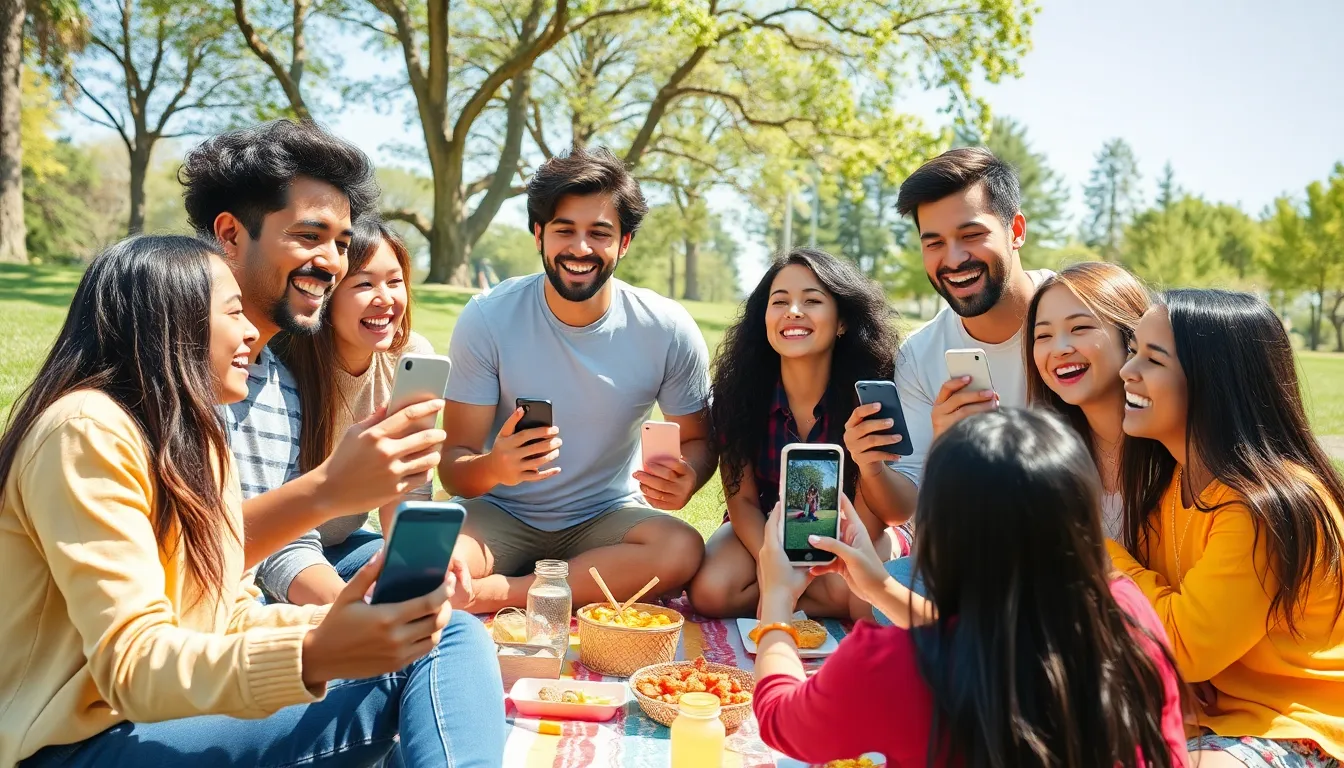In today’s digital age, viral videos reign supreme, capturing hearts and minds with just a click. Whether it’s a cat playing the piano or a toddler delivering a knockout dance routine, these snippets of joy spread like wildfire, igniting laughter and sparking conversations worldwide. But what makes a video go viral?
Table of Contents
ToggleUnderstanding Viral Videos
Viral videos capture widespread attention, often reaching millions in a short time. These clips elicit strong emotional reactions, driving engagement across social platforms.
Definition of Viral Videos
Viral videos refer to video content that gains rapid popularity through sharing. Typically, these clips spread organically via social media platforms, email, and messaging apps. They contain elements that resonate with viewers, prompting them to share the content within their networks. The term “viral” reflects how quickly and extensively these videos circulate, similar to a contagious virus.
Characteristics of Viral Videos
Viral videos share distinctive traits that contribute to their success. Engaging content attracts viewers and keeps their attention. High emotional impact prompts sharing by eliciting laughter, surprise, or even shock. Relatability enhances connection, allowing audiences to see themselves in the video or experience common emotions. Clear and concise messaging ensures viewers grasp the idea quickly. Online platforms also play a crucial role, as algorithms that favor engaging content amplify reach significantly.
The Evolution of Viral Videos

This section examines the progression of viral videos over time, highlighting key movements and influences.
Early Examples
In the early 2000s, viral videos began emerging as a new form of entertainment. “Charlie Bit My Finger,” released in 2007, quickly became one of the first viral sensations, gaining over 800 million views on YouTube. An unforgettable clip featuring two young brothers, it showcased the power of relatable, everyday moments. Another notable early example is “David After Dentist,” gaining traction in 2009 and illustrating the humor in unexpected situations. These videos set the foundation for what would become a thriving digital landscape of shared experiences and creativity.
The Impact of Social Media
Social media dramatically transformed the landscape of viral videos. Platforms like Facebook, Twitter, and Instagram allow content to spread rapidly, connecting millions within hours. In 2013, the “Harlem Shake” phenomenon highlighted how quick shifts in trends could take over the internet, with countless users recreating the dance in their unique styles. Additionally, algorithms play a crucial role in promoting videos based on user interests, enabling tailored content discovery. As a result, viral videos became easily shareable, fostering a sense of community around popular trends and cultural moments.
Factors That Contribute to Virality
Viral videos hinge on specific factors that enhance their appeal and sharing potential. Emotional resonance often plays a significant role.
Emotional Appeal
Content that evokes strong feelings frequently captures audience attention. Laughter, joy, surprise, and empathy drive viewers to share videos with others. High emotional impact encourages discussions and shares across social platforms. For example, heartwarming stories or humorous clips evoke immediate reactions, prompting viewers to spread the message. Videos that connect emotionally stick in people’s minds and motivate further viewing, contributing to the content’s virality.
Timing and Trends
Timely content aligns well with current events, social movements, and cultural trends. Videos that respond to trending topics attract views quickly. Relevant content capitalizes on audience interest, blending entertainment with timely information. During significant events, such as holidays or global happenings, viral videos gain traction by leveraging the immediate context. The strategic timing of a video’s release can amplify its reach significantly. Events that resonate with viewers’ current experiences can lead to rapid sharing, enhancing the chances of going viral.
Case Studies of Successful Viral Videos
Numerous campaigns showcase how videos can achieve viral status. Analyze these cases to understand the key ingredients that contribute to their success.
Notable Viral Campaigns
“Damn Daniel” gained prominence through its catchy phrase and relatable humor. This brief clip featured a teenager complimenting his friend’s footwear, captivating viewers. “Ice Bucket Challenge” created waves by combining entertainment and philanthropy. Participants dumped ice water on themselves, prompting donations to ALS research. “Kiki Challenge” encouraged users to film themselves dancing to a specific song while exiting moving cars, leading to widespread sharing. These examples illustrate how creativity and relatability drive viral engagement.
Analysis of Their Success
Emotional connection proves vital for viral campaigns. Each video resonates with viewers through humor, surprise, or social awareness. “Damn Daniel” attracted attention due to its light-heartedness, creating a shared experience among audiences. The “Ice Bucket Challenge” merged fun with a charitable cause. It inspired many to participate, amplifying its reach. Similarly, the “Kiki Challenge” thrived on trendy music and user-generated content. Those factors, combined with strategic release timing, allowed these videos to capture massive audience engagement.
The Future of Viral Videos
Viral videos continue to evolve, with trends emerging in various formats and platforms. Brands increasingly focus on authenticity to resonate with audiences. Short-form content, popularized by platforms like TikTok, emphasizes quick engagement. Interactive elements such as polls and challenges invite viewer participation. Live videos create real-time connection opportunities, enhancing viewer engagement. Additionally, personalization drives tailored content, increasing relatability and shareability.
Emerging Trends
User-generated content gains traction, encouraging fans to create and share videos. Collaboration among influencers fosters broader reach and diverse audience engagement. Videos integrating augmented reality tools enhance entertainment, offering viewers immersive experiences. Storytelling becomes essential, with brands creating narratives that resonate emotionally. Memes effortlessly blend humor and cultural references, enhancing share potential. Social causes intertwine with video content, drawing attention to important issues through viral movements.
Predictions for 2024 and Beyond
The rise of AI-generated content will shape future viral videos, providing personalized experiences. Authentic storytelling will dominate, reflecting diverse voices and perspectives. Platforms will continue prioritizing algorithm changes, impacting visibility and engagement strategies. As audience preferences shift, brands that adopt niche marketing techniques can drive deeper connections. Influencer collaborations may transform into long-term partnerships, sustaining audience loyalty. Video quality will matter more, with higher production standards influencing shares and virality.
Viral videos continue to shape the digital landscape by connecting people through shared emotions and experiences. Their ability to capture attention in a matter of moments highlights the power of creativity and relatability in content creation. As platforms evolve and audience preferences shift, the future of viral content looks promising with emerging trends in authenticity and interactivity.
Brands and creators that embrace these changes will likely find greater success in engaging their audiences. By understanding the dynamics of virality and leveraging emotional resonance, they can create content that not only entertains but also fosters community and connection. The journey of viral videos is far from over as new innovations and storytelling techniques emerge, paving the way for even more captivating digital experiences.



